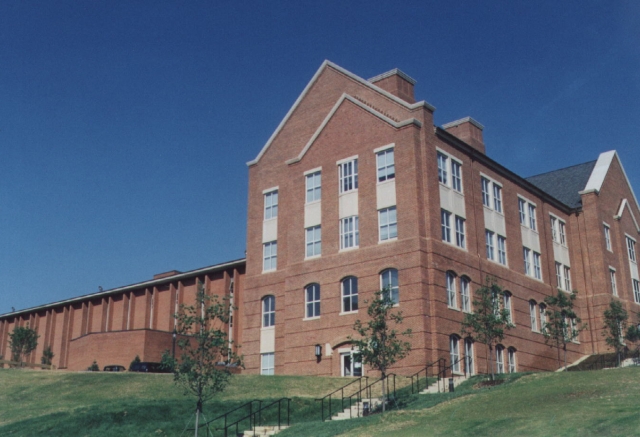College of Notre Dame, Knott Science Center
�Henry Adams designed the MEP systems throughout the 36,000 SF, 4-story addition and 55,000 SF renovation of College of Notre Dame’s Knott Science Center. The Knott Science Center features new laboratories, science and nursing suite classrooms and support space.
The new building is comprised of organic chemistry labs, advanced chemistry labs, general chemistry labs, cold rooms, psychology/sociology labs, animal rooms, high tech classrooms and offices. The third level of the building is occupied by the biology department and contains offices and labs for genetics, microbiology, biochemistry and physiology. The building is connected to the campus’ central chilled water and heating water systems. The basement level contains the mechanical and electrical equipment, with remaining space for future classrooms.
Design for renovations in the existing building included HVAC, plumbing, fire protection, and electrical upgrades. The existing chiller, cooling tower and associated pumps were removed and chilled water was connected to the central campus loop. The central air-handling unit was replaced with a new double-walled unit. Portions of the building were converted to new functions and the existing HVAC system was replaced with new fan coil units and central air for ventilation to the perimeter spaces and cooling for the interior spaces. A new combination standpipe and sprinkler system was installed to provide for total sprinklering of the new and existing building and fire department valves in the stairs. The renovated spaces were fitted out with new electrical power and lighting to suit the new function and layout. All of the upgrades were performed with the building in operation.
The HVAC system for the new addition consisted of factory assembled double-walled insulated air handling units located in the basement. The supply air system is variable volume with re-heat. Supply air fans are controlled by variable speed drives. The laboratories have three modes of operation, allowing for energy savings without complicated VAV tracking systems. The exhaust fans are located in the attic and discharge up through an ornamental chimney. All of the controls for the addition including terminal units are part of a standalone direct digital control system. The labs were supplied with central vacuum and natural gas to each bench top, and localized DI water systems were located on each floor. The addition and existing buildings were sprinklered. Domestic water was generated from a hot water to hot water heat exchanger.
The electrical service for the new addition was designed with a pad-mounted transformer outdoors. Switchgear provides a 480/277-volt, 3-phase, 4-wire system, which is distributed throughout the building. Local dry-type transformers were provided in electrical closets for 208/120-volt power. Emergency power was provided by generation and distributed to the fire alarm system, exit signs, elevators and critical equipment.
Lighting fixtures used energy efficient, electronic ballast with T-8 lamps. Compact fluorescent lamps were used for down lights and special effects lighting. We also designed exterior and pole-mounted HID roadway lighting. The telephone and data distribution systems were designed for each lab and office, and wired back to the communication closet.
A multiplex, addressable fire alarm system was designed to meet ADA guidelines. MEP design was provided for the existing nursing suite, with a practice patient suite. Henry Adams’ design for the suite included HVAC, electrical power and lighting upgrades.
Additional Information:
| Location | Baltimore, MD |
| Construction Value | $8,200,000 |
| Owner | College of Notre Dame |
| Architect | GVA and Robert A.M. Stern |




